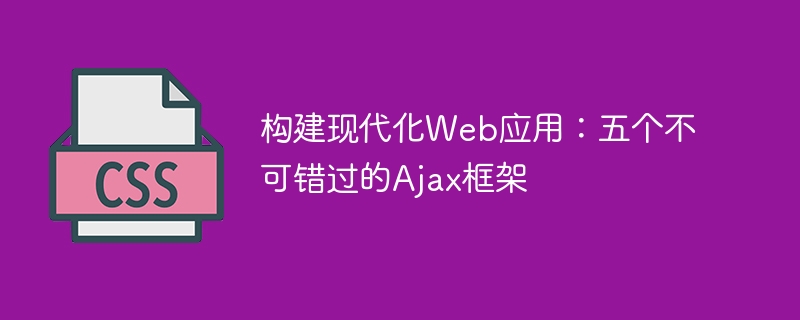

Building modern web applications: five unmissable Ajax frameworks
Web applications are developing rapidly, and modern web applications need to be efficient and interactive. Ajax (Asynchronous JavaScript and XML) technology, as an important tool for front-end development, can realize asynchronous loading of data and interactive operations, greatly improving the user experience. This article will introduce five must-miss Ajax frameworks, including jQuery, Vue.js, React, Angular, and Axios, and provide specific code examples.
$.ajax({
url: 'example.com/api/data',
method: 'GET',
success: function(response) {
// 处理返回的数据
},
error: function(xhr, status, error) {
// 处理错误
}
});new Vue({
el: '#app',
data: {
data: ''
},
mounted() {
axios.get('example.com/api/data')
.then(response => {
this.data = response.data;
})
.catch(error => {
console.error(error);
});
}
});import React, { useState, useEffect } from 'react';
import axios from 'axios';
function App() {
const [data, setData] = useState('');
useEffect(() => {
axios.get('example.com/api/data')
.then(response => {
setData(response.data);
})
.catch(error => {
console.error(error);
});
}, []);
return (
<div>
{data}
</div>
);
}
export default App;import { Component, OnInit } from '@angular/core';
import { HttpClient } from '@angular/common/http';
@Component({
templateUrl: 'app.component.html'
})
export class AppComponent implements OnInit {
data: any;
constructor(private http: HttpClient) { }
ngOnInit() {
this.http.get('example.com/api/data')
.subscribe(response => {
this.data = response;
}, error => {
console.error(error);
});
}
}axios.get('example.com/api/data')
.then(response => {
console.log(response.data);
})
.catch(error => {
console.error(error);
});Summary:
The above introduces five Ajax frameworks that cannot be missed, including jQuery, Vue.js, React, Angular and Axios. Each framework has its own unique features and advantages, and developers can choose the appropriate framework based on the needs of the project. These frameworks provide simple and easy-to-use APIs, making Ajax requests more efficient and flexible. By using these frameworks, we can build modern, interactive web applications and improve user experience.
The above is the detailed content of Five essential Ajax frameworks to build modern web applications. For more information, please follow other related articles on the PHP Chinese website!




